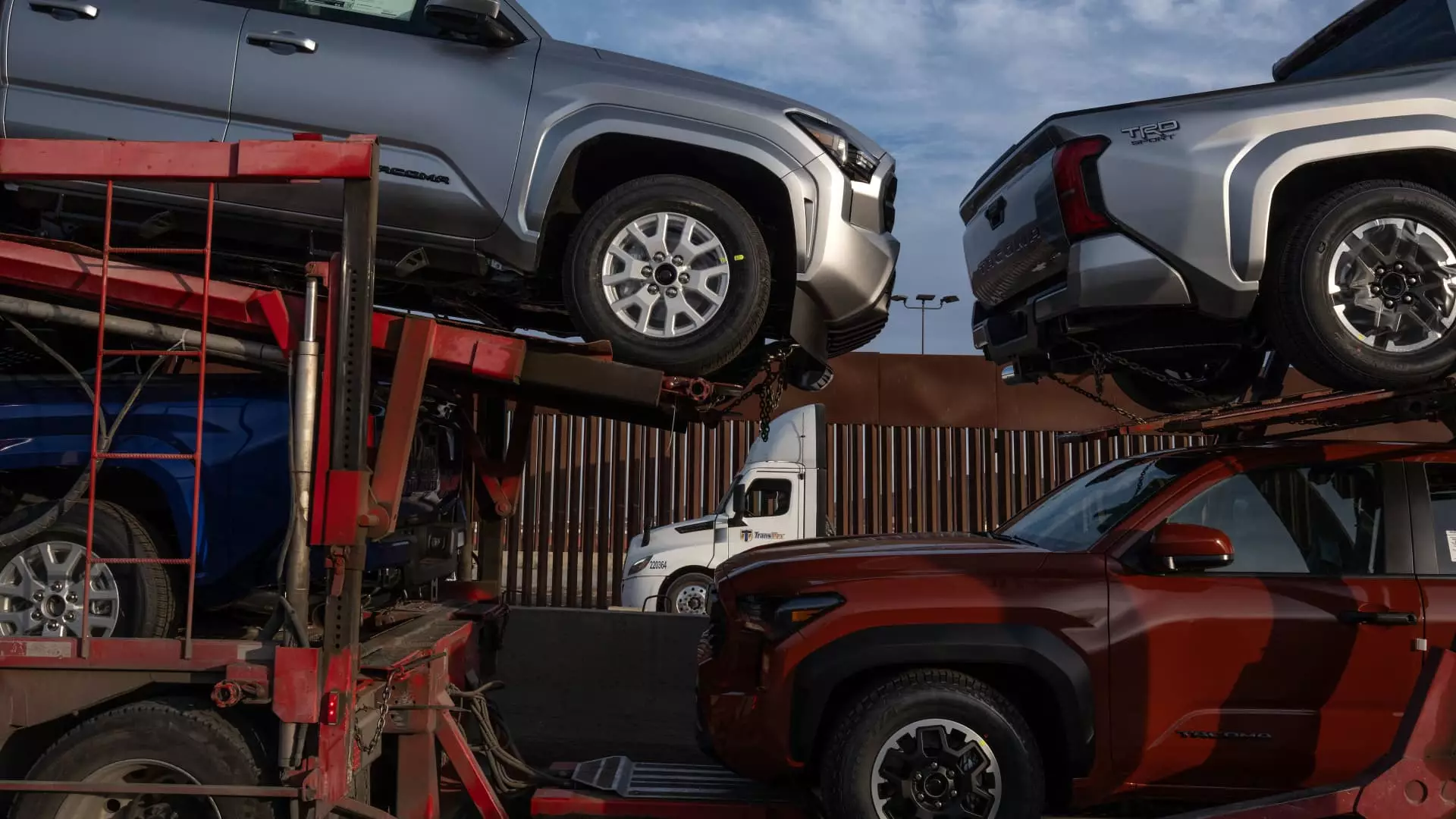The possibility of hefty tariffs imposed by the Trump administration is sending shockwaves throughout the global automotive sector, as the industry grapples with uncertainty surrounding its future. President Trump’s threat to enact a 25% tariff on imports from Canada and Mexico is not just a matter of economics; it poses a larger question about the viability of manufacturing alliances developed over decades across North America. The automotive industry—a cornerstone of the U.S. economy—finds itself in a precarious position as it awaits governmental decisions that could redefine its operational landscape.
A tariff functions as a deterrent to foreign merchandise by increasing its cost, effectively serving as a tax on imports. This mechanism is designed to protect domestic producers but at a potential cost to consumers, who may see prices climb. As automakers like General Motors (GM) prepare for potential impacts, they face a dual challenge: managing consumer expectations while facing the realities of increased operational costs. GM’s stock performance illustrates this anxiety; despite positive earnings reports, the specter of tariffs contributed to one of its worst trading days in years. This volatility is indicative of a broader sentiment among investors and stakeholders, who are careful to assess the implications of an unpredictable policy direction.
The automotive sector is notably vulnerable to changes in trade policy, primarily due to the deeply interwoven nature of manufacturing across the U.S, Canada, and Mexico. These three countries have created an integrated supply chain, with a significant portion of parts and finished vehicles crossing borders regularly. In fact, nearly half of the auto parts utilized in Mexican production originate from the U.S.—a testament to the collaborative framework that exists amidst cost considerations.
The ramifications of imposing tariffs can extend far beyond the manufacturers themselves. Wells Fargo’s data reveal that traditional automakers could incur staggering losses, with estimates suggesting $13 billion, $25 billion, and up to $56 billion in cumulative impacts as tariffs rise from 5% to 25%. This enormous financial burden would not only affect the bottom line for giants like GM and Ford, but it could also ripple through the entire industry, leading to reduced exports, job losses, and potential bankruptcies among smaller suppliers and manufacturers.
Tariff-induced cost inflation would likely compel automakers to pass on increased prices to consumers, ultimately diminishing vehicle demand. S&P Global Mobility’s analysis indicates that a 25% tariff on a $25,000 vehicle could hike costs by $6,250, a substantial jump that many consumers would be hesitant to absorb. This could lead to a significant decline in market activity, exacerbating an already competitive auto landscape.
While automakers scramble to formulate response strategies, the overall atmosphere remains marked by uncertainty. Executives like GM’s CFO Paul Jacobson and CEO Mary Barra have acknowledged the precariousness of their situation and have insisted that plans are in place to mitigate any adverse outcomes, yet investors are left unconvinced. “There’s just so much noise,” Jacobson remarked, emphasizing the need for clearer data before making any long-term commitments. This statement underlines the pervasive ambiguity that characterizes the industry as it awaits clarity from Washington.
Notably, various automakers are positioned differently regarding tariff susceptibility. Volkswagen, for instance, stands as the most exposed, with 43% of its U.S. sales produced in Mexico, closely followed by other players like Nissan, Stellantis, and GM. Each company’s reliance on Mexican manufacturing means that decisions made in the political sphere could impose distinct challenges on their operational strategies.
The Path Forward: Navigating a Trade Minefield
As the automotive industry collectively holds its breath, all eyes are on the impending governmental decisions regarding tariffs. Executives grapple with constructing strategic frameworks while managing investor anxieties and consumer expectations. The stakes are high, and the upcoming weeks will be critical for determining how this significant policy shift will play out.
Ultimately, in an industry defined by agility and responsiveness, automotive manufacturers must navigate a complex web of economic factors, trade policies, and market demands. The question remains: will these companies endure the storm and emerge stronger, or will tariffs hinder their ability to remain competitive in an evolving global landscape? As the world watches, one thing is clear—the road ahead will demand careful navigation and precise maneuvering as the automotive sector confronts potential upheaval from impending tariffs.

